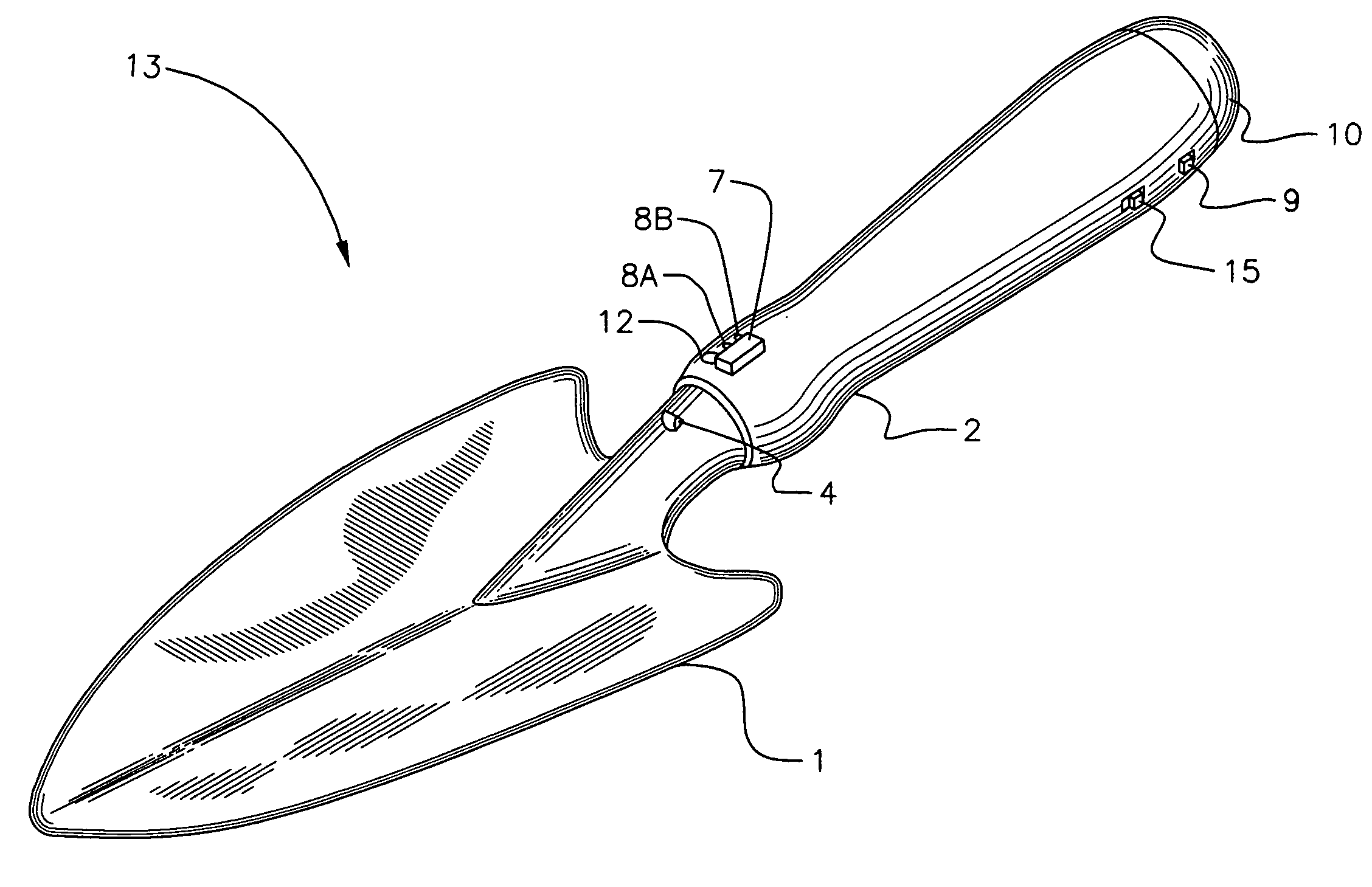Metal detection excavation apparatus and method
a technology of metal detection and excavation equipment, which is applied in the direction of reradiation, spades, instruments, etc., can solve the problems of difficult to determine the exact location of a metallic object in the dirt or other medium as it is dug up, and the process is quite tedious, so as to achieve the effect of convenient location and excavating of objects
- Summary
- Abstract
- Description
- Claims
- Application Information
AI Technical Summary
Benefits of technology
Problems solved by technology
Method used
Image
Examples
Embodiment Construction
[0058]Before explaining the present invention in detail, it should be understood that the present invention is not limited in its application or construction to the details of the arrangement of parts and construction illustrated in the accompanying drawings, because the present invention is capable of other embodiments and modifications and of being practiced or carried out in various ways. Furthermore; it should also be understood that the phraseology or terminology employed herein is for the purpose of description and illustration only, and not of limitation or restriction.
[0059]FIG. 1 discloses a perspective view of a preferred embodiment of a metal detection excavation apparatus 13 according to the present invention. Excavation tool 1 and handle 2 are made of a material which is non-detectable by a metal detector. In a preferred embodiment, excavation tool 1 and handle 2 share a unitary structure and may be formed of a composite plastic material but not limited to. Excavation t...
PUM
 Login to View More
Login to View More Abstract
Description
Claims
Application Information
 Login to View More
Login to View More - R&D
- Intellectual Property
- Life Sciences
- Materials
- Tech Scout
- Unparalleled Data Quality
- Higher Quality Content
- 60% Fewer Hallucinations
Browse by: Latest US Patents, China's latest patents, Technical Efficacy Thesaurus, Application Domain, Technology Topic, Popular Technical Reports.
© 2025 PatSnap. All rights reserved.Legal|Privacy policy|Modern Slavery Act Transparency Statement|Sitemap|About US| Contact US: help@patsnap.com



